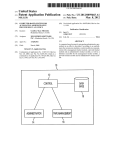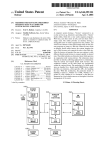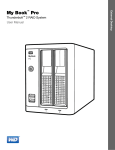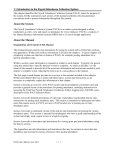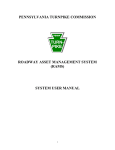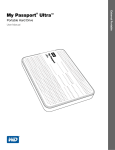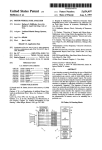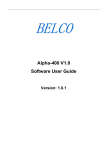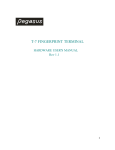Download Computer-based system for automating administrative procedures in
Transcript
USOO8751260B2 (12) United States Patent (10) Patent N0.: Miller (54) (45) Date of Patent: COMPUTER-BASED SYSTEM FOR (52) AUTOMATING ADMINISTRATIVE *Jun. 10, 2014 US. Cl. USPC ............................................... .. 705/2; 705/35 PROCEDURES IN AN OFFICE (58) _ (75) Inventor? US 8,751,260 B2 Field of Classi?cation Search USPC GeOf?‘ey Marc Mlllers Manhattan ............................................................ .. 705/2 See application ?le for complete search history. Beach, CA (U S) (73) Assignee: Millermed Software, Inc., Manhattan (56) References Cited Beach, CA (Us) (*) Notice: US. PATENT DOCUMENTS Subject to any disclaimer, the term ofthis 5,974,389 A * 10/1999 Clark et a1, , 705/3 patent is extended or adjusted under 35 6,973,434 132* 12/2005 Miller 705/2 U_s_c_ 154(1)) by 0 days_ 8,055,510 B2 * 11/2011 Miller ............................. .. 705/2 This patent is subject to a terminal disclaimer. OTHER PUBLICATIONS Computer-based Patient Record Institute, Computer-based Patient (21) APPL NO; 13/289,872 Record System Description of Functionality, Aug. 1996.* (22) Filed: * cited by examiner (65) Prior Publication Data Us 2012/0059665 A1 Man 8’ 2012 Nov. 4, 2011 Primary Examiner i Tran Nguyen (74) Attorney, Agent, 01’ Firm i Kenyon & Kenyon LLP Related US. Application Data (57) ABSTRACT (63) Continuation 0f application N0~ 1 1081217, ?led 011 A computer-based system for automating administrative pro cedures in an of?ce is described. According to an embodi ment, the system may include a control module in communi cation With a management tracker module, a provider tracker (60) N0V~ 28, 2005, HOW Pat N0~ 8,055,510, WhiCh is a Continuation 0f application N0~ 09/227,406, ?led 011 Ian. 8, 1999, HOW Pat. NO. 6,973,434. Provisional application NO 60/070 88 4 ?led on Jan module and an administrative tracker module, as well as a 9 1998 ’ ' database accessible by the management tracker module, a provider tracker module and an administrative tracker mod (51) ' ’ ’ ' Int. C1. 1116 G06Q 50/00 (2012.01) G06Q 10/00 (2012.01) 14 Claims, 6 Drawing Sheets ‘3 )2 CONTROL DATA BASE 18 ADMINISTRATOR 14 TAPE MANAGEMENT 16 US. Patent Jun. 10, 2014 US 8,751,260 B2 Sheet 1 0f6 10 \ 12 / CONTROL DATA BASE 18 ADMINISTRATOR TAPE MANAGEMENT / \ I4 16 FIG. I US. Patent Jun. 10, 2014 Sheet 2 0f6 US 8,751,260 B2 10 \ 12 / CONTROL DATA BASE 18 TRANSCRIPTION SERVICE \ 30 ADMIN TAPE MANAGEMENT / \ 14 16 FIG. 2 US. Patent Jun. 10, 2014 Sheet 3 0f6 US 8,751,260 B2 10 / 12 / CONTROL DATA BASE 18 TAPE 40 42 44 46 4s 50 / / / / / / REPORT MGMT FIG. 3 PROVIDER ADMIN US. Patent Jun. 10, 2014 Sheet 4 0f6 US 8,751,260 B2 IO \ 12 / CONTROL DATA BASE 18 ADMIN TAPE MGMT / \ 14 I6 62 62 62 REMOTE PC / 60 REMOTE PC REMOTE PC / \ 60 so FIG. 4 TRANSCRIPTION SERVICE US. Patent Jun. 10, 2014 Sheet 5 0f6 US 8,751,260 B2 so / . OATA BASE 18 82 82 82 / / / / / / 10 10 CONTROL \12 CONTROL \12 14\ / \ /Ta 14\ / \16/ ADMIN TAPE MGMT ADMIN TAPE MGMT FIG. 5 10 CONTROL \12 14\ ADMIN T 16 APE MGMT US. Patent Jun. 10, 2014 Sheet 6 0f6 SUBSCRIPTION US 8,751,260 B2 \ SERVICE CENTER 90 92 92 / / / / 10 CONTROL / 14 \ ADMIN 12 DATA IO CONTROL / \ 16 BASE 12 DATA 14 / \ 16 BASE / TAPE MGMT ADMIN FIG. 6 TAPE MGMT 18 US 8,751,260 B2 1 2 COMPUTER-BASED SYSTEM FOR AUTOMATING ADMINISTRATIVE PROCEDURES IN AN OFFICE and supporting off-site performance of one or more adminis trative tasks, including managing electronic information exchanges with off-site service providers. In accordance with another embodiment of the present CROSS-REFERENCE TO RELATED APPLICATIONS invention, such a system includes a control module in com munication with an administrator module and a tape manage ment module, as well as a database accessible by the admin This application is a continuation of US. patent applica tion Ser. No. 11/287,217 ?led Nov. 28, 2005, which is a istrator module and the tape management module. The tape management module can advantageously be con?gured, for example, to manage outsourcing of tape transcription. In a variation on this embodiment, a provider module is con?g ured, for example, to generate reports directed to the needs of continuation of US. patent application Ser. No. 09/227,406, ?led on Jan. 8, 1999, now US. Pat. No. 6,973,434, which claims the bene?t under 35 U.S.C. §119(e) of US. Provi sional Application No. 60/070,884, ?led Jan. 9, 1998. US. patent applications Ser. Nos. 11/287,217 and 09/227,406 are service providers (e.g., daily task lists, workload reports, chart locations, tape transcription status, record review status, etc.) as opposed to administrative staff, thus enabling the hereby incorporated by reference, as if repeated herein in their entirety, including the drawings. system to be geared towards the providers themselves in a way not typically found in existing medical of?ce software. In accordance with another embodiment, a computer BACKGROUND OF THE INVENTION The present invention is directed generally to the ?eld of of?ce automation, and in particular to a computer-based sys tem for automating administrative procedures in a medical of?ce. In accordance with particular embodiments of the 20 such a subscription service, one or more medical of?ces are provided with an of?ce automation system including a com invention disclosed herein, various administrative procedures that would otherwise require substantial manpower to com implemented subscription service for automating administra tive procedures in a medical of?ce is provided. In providing munications interface for receiving data electronically. A ser 25 vice center receives a request for of?ce administration ser plete are instead performed by an integrated computer system that performs those administrative procedures in an ef?cient, vices from such a medical of?ce, processes the request, and cost-effective manner. As a result, substantially less man request to the of?ce automation system at the requesting electronically transmits information relating to the processed power is required to run a medical of?ce, thereby reducing overhead costs. medical of?ce. Services that can be provided in this manner 30 It is well-recognized that the single largest expense in a medical of?ce is personnel, and that the processing of docu These and other embodiments are described in detail ments generates the majority of the labor in a medical of?ce. As service providers, however, physicians and medical of?ce staff should ideally be spending their time on patient care, and 35 not on document management. Time lost to administrative duties is all the more critical in view of the trend towards below. Persons in the ?eld of medical services will appreciate that embodiments of the present invention enable providers of medical services to streamline administrative operations in a way not possible with prior medical software applications, allowing for signi?cant reductions in overhead attributable to managed health care, leading to reduced medical fees but administrative staf?ng requirements. increased overhead costs. There are literally hundreds of medical software applica include, for example, tape transcription, chart preparation, record review, report generation, and forms generation. 40 tions available today. The majority of these applications deal with billing, scheduling, medical records, and most recently, BRIEF DESCRIPTION OF THE DRAWINGS outcome management. In addition, there are report genera FIG. 1 is a block diagram illustrating a computer-based system for automating administrative procedures in a medical tors, online services, and efforts to move towards a so-called “paperless of?ce.” While such tools can be helpful, none of 45 them directly address the most costly component of medical of?ce overheadilabor hours. There is therefore a need to reduce the manpower required to complete of?ce administration tasks typically required in a medical of?ce, such as tape transcription, chart preparation, report generation, and forms generation. Embodiments of the 50 of?ce in accordance with an embodiment of the present invention. FIG. 2 is a block diagram illustrating an embodiment of the present invention wherein a system such as that shown in FIG. 1 is in communication with a remote transcription service. FIG. 3 is a block diagram providing a detailed view of a control module of a computer-based system for automating administrative procedures in a medical of?ce in accordance present invention meet that need. with, for example, the embodiment shown in FIG. 1. SUMMARY OF THE INVENTION 55 The present invention is directed to a computer-based sys tem for automating administrative procedures in a medical of?ce. In accordance with an embodiment of the present invention, a computer-implemented method for automating administrative procedures in a medical of?ce is provided. FIG. 4 is a block diagram illustrating an embodiment of the present invention wherein a system such as that shown in FIG. 1 is in communication with a remote transcription service and a plurality of remote personal computers. FIG. 5 is a block diagram illustrating an embodiment of the present invention wherein a plurality of client computers 60 con?gured with computer-based systems for automating including provider information, patient information, and administrative procedures in a medical of?ce in accordance with, for example, the embodiment shown in FIG. 1, are in document management information; using the database to communication with a server computer. Such a method includes the steps of maintaining a database automatically generate management reports identifying tasks to be performed on a given day; automatically generating reports associated with the tasks to be performed, populating the reports with information from the database as appropriate; FIG. 6 is a block diagram illustrating an embodiment of the 65 present invention wherein a plurality of computers con?gured with computer-based systems for automating administrative procedures in a medical of?ce in accordance with, for US 8,751,260 B2 3 4 example, the embodiment shown in FIG. 1, are in communi cation with a subscription service center. typically required in a medical of?ce, it may be desirable to have both a laser printer or high-quality ink jet printer (e. g., for printing medical forms) and a dot matrix printer (e.g., for printing triplicate forms). DETAILED DESCRIPTION OF THE PREFERRED EMBODIMENTS In the embodiment shown in FIG. 1, control module 12, administrator module 14, and tape management module 16 The present invention is directed generally to computer based systems for automating administrative procedures in a medical of?ce. In accordance with particular embodiments of the invention, various administrative procedures that would otherwise require substantial manpower to complete are each reside on the same computer. Persons skilled in the art will recognize, however, that a wide variety of architectural arrangements are possible to meet the particular needs of any given implementation. For example, a client-server type of performs those administrative procedures in an ef?cient, co st effective manner. As a result, substantially less manpower is required to run a medical of?ce, thereby reducing overhead arrangement may be desirable for even a small to moderately sized medical of?ce. In such an implementation, of?ce auto mation system 10 can be installed on an applications server in communication with a plurality of client computers over a local area network (LAN). Such client computers can be used costs. In addition, systems con?gured in accordance with the present invention enable providers and/or of?ce administra by a variety of of?ce personnel, such as service providers (e.g., doctors, nurses) and administrative personnel, to access instead performed by an integrated computer system that tors to become more independent from support staff than is system functions. Similarly, database 18 can reside on a cen possible in a typical medical of?ce. tral server computer accessible by a plurality of different of?ce automation systems 10 in remote locations. This type of arrangement is especially useful where a medical practice has a number of branch of?ces, thus allowing patient and admin istrative information to be economically shared by all of the different of?ces. Referring now to FIG. 1, in accordance with a ?rst embodi ment of the present invention, a of?ce automation system 10 for automating administrative procedures in a medical of?ce 20 includes a control module 12 in communication with an administrator module 14 and a tape management module 16. In addition, of?ce automation system 10 has access to a 25 The embodiment illustrated in FIG. 1 is preferably imple database 18. In the illustrated embodiment, control module 12, administrator module 14 and tape management module 16 mented to maximize the use of features and capabilities pro comprise software modules coded in, for example, the C++ programming language. Alternatively, suitable code can be readily generated using a facility such as Visual FoxPro®. An example of a system implementing features of the example, administrator module 14 can interface with known word processing applications, such as Microsoft Word® or Corel WordPerfect®. Database 18 can be implemented using known database applications, such as Microsoft Excel®, and embodiment shown in FIG. 1, as well as features of other embodiments described herein, is the MillerMed UtilitiesTM application available from MillerMed Software, Inc. of Bon sall, Calif. The MillerMed UtilitiesTM application is described further in MillerMed Utilities: The Antidote for an Organiza vided by existing off-the-shelf software applications. For 30 can be formatted to be compatible with existing medical applications such as Medical Manager® and Physicians Of?ce Computer®. Alternatively, a suite of such applications, 35 such as Microsoft O?ice®, may be used. Other off-the-shelf applications that can be advantageously integrated with tion, User Manual for Windows95 (MillerMed Software, Inc. 1998), the disclosure of which is incorporated herein by ref embodiments of the present invention include an event sched uler, a desktop-emulation package (e.g., PC Anywhere®, Carbon Copy®), Internet connectivity and browser software, erence. Database 18 can reside on the same computer as control 40 and utility packages such as Norton Utilities®. module 12, administrator module 14 and tape management In accordance with another embodiment of the present invention, illustrated in FIG. 2, of?ce automation system 10 is module 16, or database 18 can alternatively reside on a sepa rate computer (e.g., a database server). Where database 18 is remote from the other components of of?ce automation sys tem 10, it may be bene?cial for performance reasons to pro vide a local data store for temporary storage of information read from, or to be written to, database 18. Likewise, in the embodiment shown in FIG. 1, administrator module 14 and tape management module 16 access database 18 through control module 12. Alternatively, administrator module 14 and/or tape management module 16 can be given direct electronically linked to a transcription service 30 by a com munications link 32. This embodiment thus facilitates the 45 staff (thereby reducing overhead). For this purpose, of?ce automation system 10 includes a communications interface (not shown) for electronically exchanging data with tran 50 access to database 18. Of?ce automation system 10 can be implemented on vir tually any type of general purpose personal computer (PC) having adequate processing power. One suitable hardware outsourcing of tape transcription, enabling a service provider to either reallocate staff to other tasks or reduce the size of the 55 scription service 30. The communications interface can be implemented as customized software included in, for example, control module 12 of of?ce automation system 10. Alternatively, or in addition, the communications interface can be implemented using an off-the-shelf communications package, including but not limited to an e-mail application. In con?guration includes a Pentium®-class or comparable short, any application that permits ?les to be exchanged IBM-compatible PC having at least 16 megabytes of RAM (random access memory). To take full advantage of visual and between two computers is suitable. Likewise, communica tions link 32 can be virtually any type of communications medium, including a dial-up connection over telephone lines, aural information that can be provided to a user of of?ce automation system 10, the PC should have a Super VGA video card and a sound card. Similarly, to take full advantage of certain outsourcing features that can be provided in accor dance with variations of the embodiment shown in FIG. 1, the 60 PC should include a modem and/or a network interface for communicating with other computers. Finally, the PC should be coupled, either directly or indirectly, to at least one printer for report generation. In view of the different types of reports a satellite connection, a wireless connection, part of a dedi cated computer network (e.g., in a LAN (local area network) or WAN (wide area network)). In one particular implementa 65 tion, communications link 32 comprises an Internet connec tion. Of?ce automation system 10 can also be con?gured to facilitate outsourcing of medical records review in much the same way as outsourcing of tape transcription. For example, US 8,751,260 B2 5 6 rather than managing the exchange of information with tran scription service 30, of?ce automation system 10 can manage the of?ce, thereby reducing personnel needs. In this particular embodiment, control module 12 is coupled to a tape tracker 40, a report tracker 42, a management tracker 44, a database tracker 46, a provider tracker 48, and an administrator tracker the exchange of information (e.g., medical records, reports) with an off-site record review service (not shown). In accordance with the embodiment in FIG. 2, a given service provider would typically make a number of dictation tapes during the course of a day re?ecting, for example, services provided and/or entries to be made in patient charts. 50. Examples of the types of functions performed by each tracker module are presented below. As is well known in the art of computer programming, the various tracker modules shown in FIG. 3 can be con?gured, Before the present invention, such tapes presented signi?cant logistical, administrative, and staf?ng challenges. Various of?ce personnel would be responsible for collecting the dic for example, as substantially independent routines operating under the supervision of control module 12, and capable of tation tapes, transcribing them or assigning others to tran database 18 or a local data store. Alternatively, the tracker scribe them, distributing the tapes back to the service provider for proo?ng, and then updating patients’ charts with the tran modules can be con?gured in a master-slave relationship sharing data with one another through, for example, access to under close control by control module 12, operating only when expressly invoked by control module 12 and returning scribed reports. With this embodiment, it is now possible to outsource much of the labor associated with tape transcrip tion, while at the same time improving the associated tracking control to control module 12 upon completion of processing. Persons skilled in the art will recognize that a wide variety of implementations are possible, and the present invention is not and processing functions. limited to any particular control con?guration. To illustrate some of the advantages of the embodiment shown in FIG. 2, consider a medical of?ce in which one or 20 more service providers generate a number of dictation tapes in any given day. During the course of the day, the providers give tapes to a designated staff member for logging and out sourcing. Using facilities provided by tape management mod ule 16, the staff member would input to of?ce automation system 10 information such as the provider’s name, the date the tape was made, the patient(s) to whom the tape relates. 25 This information is used to build a table entry that will even tually be stored in database 18. In one possible implementa tion, the staff member would then select an off-site transcrip tioni st to transcribe the tape. Such selection is preferably done by choosing one of a number of possible transcriptionists 30 35 ing the selected transcriptionist. Tape management module 16 can also be con?gured to automatically print a shipping label for each copy of each report sent to the transcriptionist. 40 overnight courier service. Upon completion of transcription, 45 example, report tracker 42 uses information in database 18 to 50 tions of a collection of “tracker” modules aimed at minimiz ing communication and document handling requirements for automatically insert patient registration data on all reports relating to a given patient, ?lling in headings, captions, and carbon copy entries on all reports. In accordance with a par ticular implementation, report tracker 42 uses customizable templates built, for example, using standard macro features geously used to departmentalize the administrative functions cally taken to medical of?ce administration. Many tradition ally necessary interactions between o?ice personnel can be reduced or eliminated entirely by relegating tasks to intelli gent software to the maximum extent possible. For example, in accordance with another embodiment of the present inven tion, illustrated in FIG. 3, of?ce automation system 10 is con?gured to establish a plurality of “virtual departments,” each of which is directed to managing and/ or performing different administrative functions. To this end, control mod ule 12 of of?ce automation system 10 coordinates the opera tapes. Report tracker 42 is con?gured to provide comprehensive report generation and distribution facilities, aimed at reduc ing the extent of user input required for these tasks. For Embodiments of the present invention can be advanta of a medical of?ce, signi?cantly altering the approach typi being advised of a new tape to be transcribed, tape tracker 40 can identify the transcriptionist with the lightest current workload and automatically assign the new tape to that tran scriptionist. Other information, such as average turnaround time, can be used to further re?ne the assignment of new transcription service 30 transmits a ?le containing the tran scribed report back to of?ce automation system 10 over com example, workload information maintained in database 18. For example, database 18 may include a transcriptionist table containing records for each of a plurality of transcriptionists, whether on-site or off-site. For each such transcriptionist, database 18 would include information relating to the identity and address of the transcriptionist, as well as the number of At the end of the day, tapes ready for transcription are shipped to transcription service 30 using, for example, an munications link 32. Tape management module 16 will update database 18 appropriately to re?ect receipt of the transcription, and the transcribed report can be distributed electronically to the provider or other staff member for review. All such processing can be performed automatically in a background mode, as is known in the art, without requir ing any staff interaction. shipping information), all with minimal user input. In accordance with a particular implementation of this embodiment, tape tracker 40 includes a facility for automati tapes currently assigned to the transcriptionist. Thus, upon Once all identifying information is input, the table entry is stored in database 18. and/or reporting information relating to tapes (e. g., physical location, status), transcriptionists (e.g., name and address, number and identity of tapes assigned, current workload), record reviewers (e.g., records assigned, age of assigned records, review status), and documents (e.g., charts, invoices, cally assigning tapes to transcriptionists based upon, for presented to the staff member on a display screen. Upon selection of a transcriptionist, tape management module 16 adds to the aforementioned table entry information identify Looking more closely at the individual sub-modules in the particular embodiment shown in FIG. 3, tape tracker 40 is con?gured to provide a comprehensive transcription manage ment system. Tape tracker 40 provides facilities for tracking 55 provided by most popular word processing applications (e. g., Microsoft Word®), to reduce the amount of effort required to complete reports. For instance, macros can be used to estab lish setup forms that enable users to easily customize report 60 headings and establish standard text entries (i.e., boilerplate) for each provider. Similarly, customized letterhead for each branch of?ce of a multi-branch practice can be readily pro vided, as well as automatically-inserted signatures for each provider. 65 Report tracker 42 also provides the ability to streamline report distribution. In a typical of?ce environment, reports must be reviewed and signed by a provider, and often must also be reviewed by an editor for quality control purposes, US 8,751,260 B2 7 8 leading to a situation in which large numbers of physical documents are constantly being passed around the of?ce. To alleviate the logistical and administrative problems inherent in such an approach, report tracker module 42 can be con?g ured to distribute reports electronically whenever possible. For example, providers can choose to have ?nal versions of reports electronically copied to a personal directory acces sible through of?ce automation system 10 for review, or can select a designated editor to receive signed reports and review In keeping with the approach of the tracker modules already described, database tracker 46 is con?gured to auto matically perform a variety of database maintenance activi ties, most or all of which preferably occur at night when the medical of?ce is closed to avoid competition for precious computer resources. For example, records can be automati cally archived after a predetermined period of inactivity (e. g., 30 days), and such archived records can be automatically removed from any and all directories to which copies had been transferred. Database tracker 46 can also be con?gured to automatically send e-mail noti?cations of required actions them, again by copying the report to the editor’s personal directory. Depending upon the nature of a particular imple (e.g., report review) to appropriate personnel based upon mentation, such personal directories may reside on a server computer accessible by the provider and/ or editor, or on some information in the database records (e.g., age of record, sta tus). Database tracker 46 is also responsible for constantly other computer capable of communicating with the computer tracking the ?ow of ?les into and out of the of?ce, automati cally adding new clients to database 18 and automatically running of?ce automation system 10 (e.g., an of?ce PC capable of accessing of?ce automation system 10 over a LAN, a home PC capable of exchanging ?les with of?ce ?nding and inserting data for future patients into appropriate automation system 10 using e-mail). Report tracker 42 also permits reports to be routed to des 20 ignated printers on demand (e.g., by copying a ?le containing the report to a print directory). Indeed, persons familiar with medical of?ce administration will appreciate that report tracker 42 allows many types of reports to be processed with out ever being handled by a provider. For example, of?ce notes, follow-ups, and other simple reports can be automati cally sent by report tracker 42 directly to a printer. Report tracker 42 can also be con?gured to automatically screens with the latest available information. 25 appropriate directories for access when the of?ce reopens. In certain cases, forms can be generated without any staff inter action at all based only on the registration type of each new Provider tracker 48 is con?gured to give providers access to a variety of information and facilities aimed at reducing overhead requirements and improving ef?ciency with respect to administrative tasks. For example, provider tracker 48 can provide a report of all currently outstanding dictations. Simi larly, provider tracker 48 can give the provider access to a create a wide variety of standard forms, such as those asso ciated with workers’ compensation claims (e.g., noti?cation forms, QME Summary). Such forms can be generated in batch jobs run during off-hours using information stored in database 18, and the generated reports can then be copied to records. Thus, very little data entry is required after the initial input of registration information for a new patient. In addi tion, database tracker 46 can be con?gured to maintain updat able tables of information relating to employees, providers, report types, and other data for use in populating display 30 report of all outstanding reports, and can prioritize such reports by their respective ages. The provider thus knows how much work needs to be done, as well as what should be done ?rst, without having to contact a staff member. In this embodiment, provider tracker 48 also provides the ability to 35 transfer ?les to a diskette or to a remote computer (e.g., a patient. Again, such forms can be made easily customizable home PC), and automatically distributes reports received from report tracker 42 to the appropriate provider’s personal through the use of word processor macros. In accordance with the embodiment shown in FIG. 3, man tain information in database 18 relating to provider workload, agement tracker 44 is con?gured to provide statistical infor mation relating to of?ce management for use in identifying directory. Provider tracker 48 can also be con?gured to main 40 loads when determining to whom to assign new work (e.g., new managed care patients). Administrator tracker 50 is con?gured to provide users potential problems and further streamlining operations. For example, to address the logistical problems typically associ ated with tracking patient charts, management tracker 44 automatically generates a daily report showing the number of charts assigned to each department in the medical of?ce. This with access to a variety of information typically required by 45 has been in a given department). By simply consulting this 50 can ascertain a workload status for each department without ever consulting another employee. Likewise, management tracker 44 can be con?gured to automatically generate and print a variety of other daily reports, including listings of past, present and future appoint ments; charts requiring speci?c action (e.g., needing a pain 55 management reports for each department in the medical of?ce; reports of on-site and/or off-site data availability; instant access to provider workload, tape status, and chart location information. By maintaining all of the underlying information for such reports in database 18, administrator tracker 50 enables the of?ce administrator to acquire an array of necessary information without the need for interactions with other of?ce staff members. To further reduce unneces sary employee contacts, administrator tracker 50 can be con ?gured to maintain an administrator mailbox for receiving e-mail copies of pertinent communications sent by other drawing); and identi?cation of no-show patients with contact name and phone number. Other possible reports include data employees. base maintenance listings identifying, for example, duplicate entries and other errors; and database/ ?le arching informa an of?ce administrator to perform his or her duties. For example, administrator module 52 provides instant access to report can include further detailed information, setting forth the identity of each chart and its “age” (i.e., how long the chart report at the beginning of each day, an of?ce administrator thus enabling the of?ce administrator to assess current work 60 Referring now to FIG. 4, in accordance with another embodiment of the present invention, of?ce automation sys tion (e.g., identifying tape backups generated during over night processing). Management tracker 44 preferably main tem 10 is accessible by remote PCs 60 over second commu tains a table identifying all periodic reports to be generated automatically, and such table can be readily updated by the of?ce administrator. Programming techniques and tools for implementing this type of automatic report generation are personnel to access system functions from locations other well known in the art. nications links 62, thereby enabling providers or other of?ce than the of?ce (e.g., home). Second communications links 62 65 comprise, for example, dial-up connections, but the present invention is not limited to any particular communication means. Remote PCs 60 may be loaded with special software US 8,751,260 B2 9 10 to support particular functions of of?ce automation system 10. Alternatively, remote PCs 60 need only be capable of receiving ?les from and transmitting ?les to of?ce automation system 10. The embodiments described above can readily be imple mented in a Microsoft Windows® environment, providing vice center 90. In one particular implementation of this embodiment, subscription service center 90 comprises an of?ce location and a server computer (not shown) accessible over the Internet. Each subscriber computer 92 has loaded users with a familiar, user-friendly interface to the many thereon of?ce automation system 10 con?gured, for example, As shown in FIG. 6, each of a plurality of subscriber computers 92 are in communication with a subscription ser capabilities offered by systems con?gured in accordance with like the embodiment of FIG. 1. It should be appreciated, the present invention. As is well known in the art, user inter however, that each subscriber computer 92 could actually faces can be constructed in menu form, and users can be given comprise a server maintained by a particular practice group, access to help screens, audio cues, tutorials, video demon strations, and so on using standard facilities. Various other to which are connected a number of individual computers used by providers, administrators, and other personnel. time-saving measures can also be built into the user interface. In accordance with the embodiment shown in FIG. 6, a For example, timers can be incorporated into menus where number of different types of services can be offered on a some user selection is required. In the event no selection is subscription basis, including but not limited to tape transcrip tion, record review, and chart preparation. In addition, all of the necessary tracking and reporting associated with these made within a predetermined period of time, such as ten seconds, the program driving the menu can automatically choose the selection that would most commonly be correct in services can also be provided. a given situation. In this way, even users with little or no system knowledge are able to bene?t from the system. In accordance with an enhancement of the foregoing 20 With respect to transcription, the level of service provided is fully customizable to the needs of any particular subscriber. For example, a provider can simply dictate a tape during an embodiments, each user screen can be con?gured to display a of?ce hours session and send it to subscriber service center 90 bitmap image of the user associated with the logonid used to access the system. In other words, when “John Doe” logs on, his picture would appear, for example, in the upper-left hand ter 90 would then arrange for transcription (either on-site or (e.g., by overnight delivery service). Subscriber service cen 25 logged on is in fact the owner of the logonid used. Implemen tation of this feature is readily accomplished by storing a picture of each authorized user in respective bitmap ?les. using an off-site vendor), print the report and make all copies, mail and/or e-mail the reports and copies back to the sub scriber, and update the subscriber’s database 18 to document progress. In a particular implementation, subscriber service center 90 periodically updates database 18 with the progress corner of at least one open window at all times. This feature allows anyone in the area of the user to ensure that the person 30 When a user logs on, the logonid is used to retrieve the of the requested service, thereby enabling the subscriber to use of?ce automation system 10 to access status information. associated bitmap ?le, and the stored picture is displayed on Once the ?le containing the transcription is transmitted or the screen. otherwise loaded into database 18, the subscriber can view, FIG. 5 illustrates an embodiment of the present invention directed to a network environment. In accordance with this embodiment, database 18 resides on a server computer 80 35 accessible by a plurality of client computers 82. Each client computer 82 is loaded with an instance of of?ce automation system 10 con?gured, for example, as in the embodiment of FIG. 1. In contrast to the embodiment in FIG. 1, however, 40 database 18 does not reside on the same computer as of?ce automation system 10. Such an arrangement is especially useful where, for example, a practice has a number of differ ent branches at which the same patients may be seen, since the shared use of database 18 eliminates the need to maintain 45 duplicate data at each of the multiple locations. For perfor receive transcription ?les from the transcriptionist either elec 50 scriber service center 90, or transmitted to the subscriber database 18 and, if so, to automatically replace the cached Subscriber service center 90 can also provide record 55 a subscription service, thereby offering a variety of off-site 60 choose to use the system for over?ow dictation or to out source large volumes of clerical work. review services, performing quality control checks on tran scribed dictations and/or on records and reports generated from transcription ?les. Likewise, subscriber service center 90 can prepare charts. For example, a complete set of history forms, status forms, and fee tickets for an entire of?ce session of patients, complete with patient information imprinted, can be delivered directly to any subscriber of?ce location. Subscriber service center 90 can also provide special ser vices to subscribers on demand, such as binding, preparation Thus, a solo practitioner with only periodic need for tran scription services has comparable access to the features and bene?ts of of?ce automation system 10 and associated sub scription services as does a large medical group that may processed and reports either printed and shipped by sub computer 92 for printing. In either case, chart copies are shipped to the subscriber. whether such a locally cached record has been updated on services to providers in remote locations. In accordance with such an arrangement, services can be paid for as they are used. wishes to transcribe and print tapes on-site, subscriber service center 90 can receive the transcription ?les, process them, and transmit ?les containing the desired reports to of?ce automa tion system 10 for automatic printing on the subscriber’s tronically or on diskette. As before, such ?les can then be known in the art, particularly with respect to Internet appli cations, client computer 82 can be con?gured to determine version with a copy of the updated version. Referring now to FIG. 6, in accordance with another embodiment of the present invention, an of?ce automation system 10 such as that shown in FIG. 1, is provided as part of possible. For example, where a subscriber has its own tran scriptionist, transcription ?les can be sent by diskette or elec tronically to subscriber service center 90, after which sub scriber service center 90 can print and mail reports and update the subscriber’s database 18 as just described. If a subscriber printer. Similarly, if a subscriber wishes to use a particular off-site transcriptionist, subscriber service center 90 can mance reasons, a copy of selected records from database 18 can be cached in local memories (not shown) of client com puters 82. Updates in progress can be made to the cached record and then copied to database 18 upon completion. As is print, or edit the transcription using the above-described facilities of of?ce automation system 10. Many variations of the foregoing transcription service are of slides, and preparation of other presentation materials for 65 lectures, academic conferences, and so on. Facilities built into of?ce automation system 10 for exchanging ?les with sub scriber service center 90 can readily be used for forwarding US 8,751,260 B2 11 12 (1) provide access to management reports for each depart the underlying information to subscriber service center 90 along with appropriate instructions. By providing for Internet ment. access and/or direct modem connections, subscriber service center 90 can offer maximum ?exibility to providers who are traveling. Any subscriber can then access subscriber service 2. The computer-readable storage medium of claim 1, wherein the management tracker module is con?gured to provide statistical administrative information relating to of?ce management. 3. The computer-readable storage medium of claim 2, wherein the management tracker module is con?gured to automatically generate a report showing listings of past, center 90 from a remote location to gain access to their par ticular practice’s data, retrieve reports, or drop off work. Subscriber service center 90 can also provide data archiving services, freeing up resources on the subscriber’ s system that might otherwise have to be dedicated to storing outdated records. Access to archived records can then be provided on-demand by subscriber service center 90. present and/ or future appointments. 4. The computer-readable storage medium of claim 3, wherein the management tracker module is con?gured to automatically generate a chart that requires speci?c action to be taken. 5. The computer-readable storage medium of claim 4, It should be emphasized that the foregoing subscription services are described by way of example only. Persons in the medical ?eld will recognize that many other services, both administrative and otherwise, can be provided on a subscrip tion basis using arrangements such as that shown in FIG. 6. wherein reports generated by the management tracker mod ule include database maintenance listings identifying dupli Of?ce automation systems con?gured in accordance with embodiments of the present invention can be distributed, for example, as a set of instructions residing on a storage 20 medium. Such a storage medium might be a portable storage 6. The computer-readable storage medium of claim 5, wherein the database/?le archiving information includes tape device, such as a diskette or a CD-ROM; a memory of a computer; a piece of ?rmware; or any other medium on which it is known to store executable instructions. The foregoing is a detailed description of particular embodiments of the present invention. The invention embraces all alternatives, modi?cations and variations that backups generated during overnight processing. 25 ment tracker module is generated daily and automatically 30 many other alternatives, modi?cations and variations are also possible. What is claimed is: 1. A non-transitory computer-readable storage medium for automating administrative procedures in a medical of?ce, the computer-readable storage medium comprising a database, a management tracker module, a provider tracker module, an 35 10. The computer-readable storage medium of claim 1, wherein the administrative tracker module is con?gured to provide access to reports of on-site and/or off-site data avail thereon, 40 45 12. The computer-readable storage medium of claim 11, department; 50 patients; wherein the provider tracker module is con?gured to: (1) maintain information in the database relating to pro vider workload to enable an of?ce administrator to assess current workloads when determining to whom to assign new patients; wherein the administrative tracker module is con?gured to: wherein the administrative tracker module is con?gured to provide access to provider workload, tape status, and chart location information. wherein the administrative tracker module is con?gured to maintain an administrator mailbox for receiving e-mails of charts assigned to each department so that an of?ce administrator may ascertain a workload status for each (3) automatically generate a report identifying no-show ability. 11. The computer-readable storage medium of claim 10, with one another via access to the database; wherein the management tracker module is con?gured to: (1) automatically generate a report showing the number of charts assigned to each department in the medical of?ce; (2) automatically generate a report showing an age of 8. The computer-readable storage medium of claim 4, wherein a report generated by the management tracker mod ule includes age of a chart representing how long the chart has been in a given department. 9. The computer-readable storage medium of claim 4, wherein the speci?c action to be taken in the chart generated by the management tracker module includes attachment of a pain drawing. administrative tracker module, and a control module recorded wherein the tracker modules are con?gured to operate under control of the control module and to share data 7. The computer-readable storage medium of claim 4, wherein at least one of the reports generated by the manage printed. fall within the letter and spirit of the claims, as well as all equivalents of the claimed subject matter. Persons skilled in the art will recognize from the foregoing description that cate entries and database/?le archiving information. pertinent communications sent by other employees. 13. The computer-readable storage medium of claim 1, wherein the provider tracker module is con?gured to provide a report of all outstanding dictations. 55 14. The computer-readable storage medium of claim 13, wherein the provider tracker module is con?gured to provide a report of all outstanding reports. * * * * *













